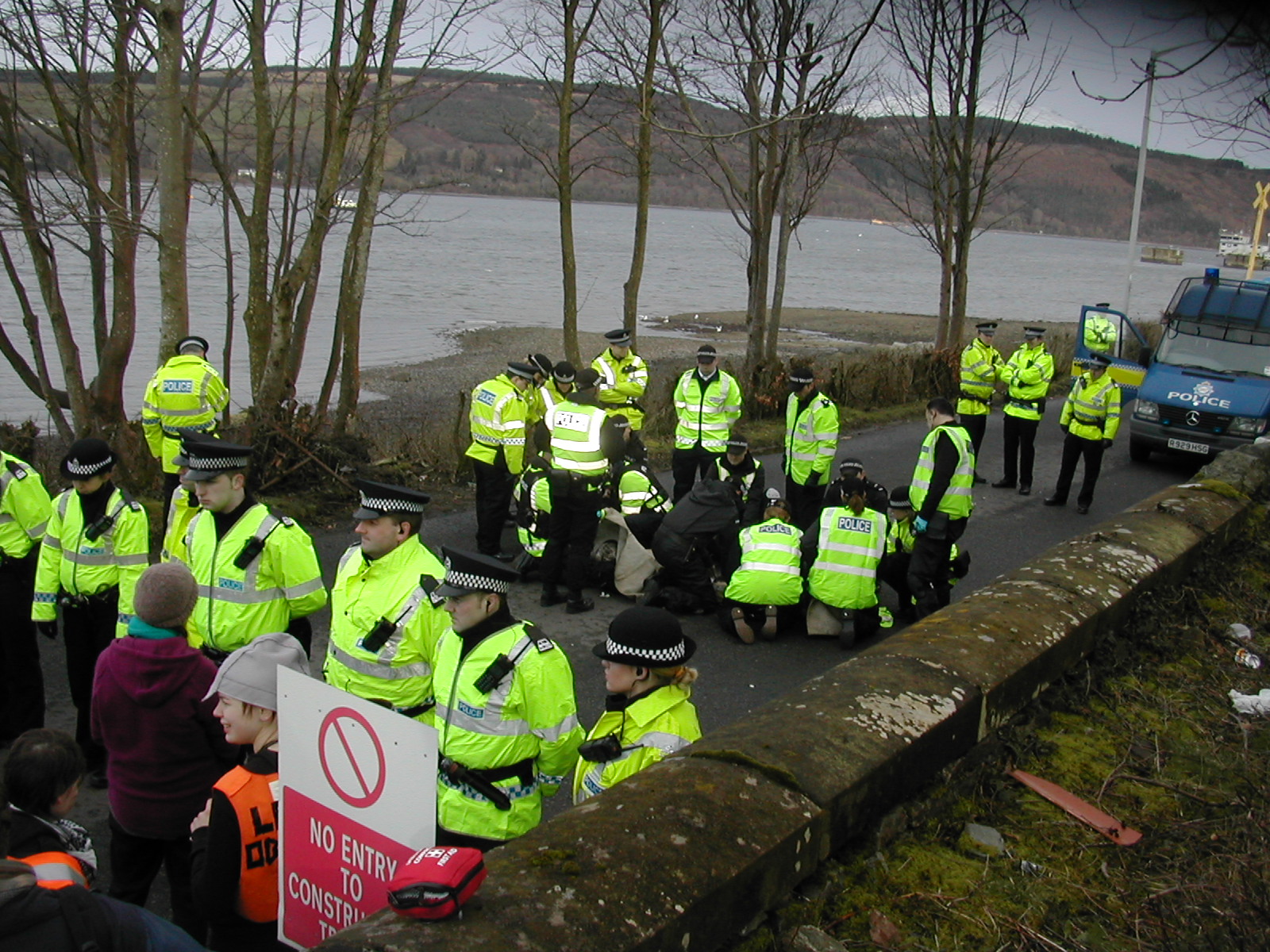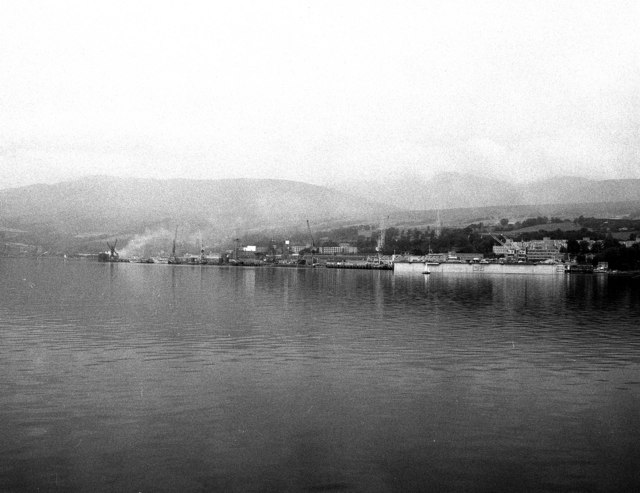|
HMS Astute (S119)
HMS ''Astute'' is an operational nuclear-powered attack submarine in the Royal Navy, the lead boat of her class. ''Astute'' is the second submarine of the Royal Navy to be named after the characteristic of shrewdness and discernment—the first was the World War II-era . She was the largest attack submarine in Royal Navy history when commissioned in 2010. Design Built as a successor to the , ''Astute'' is 50% larger than the T-boats but has a smaller crew. The 7,400-tonne ''Astute''s nuclear reactor will not need to be refuelled during the vessel's 25-year service. Since the submarine can purify water and air, she is able to circumnavigate the planet without resurfacing. The main limit is that the submarine can only carry three months' supply of food for 98 crew. ''Astute'' has stowage for 38 weapons and was expected to typically carry both Spearfish heavy torpedoes and Tomahawk Block IV cruise missiles, the latter costing £870,000 each. Construction and launch ''As ... [...More Info...] [...Related Items...] OR: [Wikipedia] [Google] [Baidu] |
HMNB Clyde
His Majesty's Naval Base, Clyde (HMNB Clyde; also HMS ''Neptune''), primarily sited at Faslane on the Gare Loch, is one of three operating bases in the United Kingdom for the Royal Navy (the others being HMNB Devonport and HMNB Portsmouth). It is the navy's headquarters in Scotland and is best known as the home of Britain's nuclear weapons, in the form of nuclear submarines armed with Trident missiles. History Faslane was first constructed and used as a base in the Second World War. During the 1960s, the British Government began negotiating the Polaris Sales Agreement with the United States regarding the purchase of a Polaris missile system to fire British-built nuclear weapons from five specially constructed submarines. In the end, only four were constructed; , , and . These four submarines were permanently based at Faslane. Faslane itself was chosen to host these vessels at the height of the Cold War because of its geographic position, which forms a bastion on the relative ... [...More Info...] [...Related Items...] OR: [Wikipedia] [Google] [Baidu] |
World War II
World War II or the Second World War, often abbreviated as WWII or WW2, was a world war that lasted from 1939 to 1945. It involved the vast majority of the world's countries—including all of the great powers—forming two opposing military alliances: the Allies and the Axis powers. World War II was a total war that directly involved more than 100 million personnel from more than 30 countries. The major participants in the war threw their entire economic, industrial, and scientific capabilities behind the war effort, blurring the distinction between civilian and military resources. Aircraft played a major role in the conflict, enabling the strategic bombing of population centres and deploying the only two nuclear weapons ever used in war. World War II was by far the deadliest conflict in human history; it resulted in 70 to 85 million fatalities, mostly among civilians. Tens of millions died due to genocides (including the Holocaust), starvation, ma ... [...More Info...] [...Related Items...] OR: [Wikipedia] [Google] [Baidu] |
Skye Bridge
The Skye Bridge ( gd, Drochaid an Eilein Sgitheanaich) is a road bridge over Loch Alsh, Scotland, connecting the Isle of Skye to the island of Eilean Bàn. The name is also used for the whole Skye Crossing, which further connects Eilean Bàn to the mainland across the Carrich Viaduct. The crossing forms part of the A87. Traditionally, the usual route from the mainland to Skye was the shortest crossing, with a length of around , across the sound between the villages of Kyle of Lochalsh on the mainland and Kyleakin on the island's east coast. A ferry service operated from around 1600, run by private operators and latterly by Caledonian MacBrayne. Background Road and rail connections to Kyle of Lochalsh were constructed towards the end of the 19th century and various parties proposed building a bridge to the island. Although the engineering task was well within the capability of the age (the crossing is shorter and shallower than that bridged by the Forth Bridge), the island' ... [...More Info...] [...Related Items...] OR: [Wikipedia] [Google] [Baidu] |
Skye
The Isle of Skye, or simply Skye (; gd, An t-Eilean Sgitheanach or ; sco, Isle o Skye), is the largest and northernmost of the major islands in the Inner Hebrides of Scotland. The island's peninsulas radiate from a mountainous hub dominated by the Cuillin, the rocky slopes of which provide some of the most dramatic mountain scenery in the country. Slesser (1981) p. 19. Although has been suggested to describe a winged shape, no definitive agreement exists as to the name's origins. The island has been occupied since the Mesolithic period, and over its history has been occupied at various times by Celtic tribes including the Picts and the Gaels, Scandinavian Vikings, and most notably the powerful integrated Norse-Gaels clans of MacLeod and MacDonald. The island was considered to be under Norwegian suzerainty until the 1266 Treaty of Perth, which transferred control over to Scotland. The 18th-century Jacobite risings led to the breaking-up of the clan system and later clearanc ... [...More Info...] [...Related Items...] OR: [Wikipedia] [Google] [Baidu] |
Faslane (bay)
Faslane (Gaelic: Am Fas Leathann) on Gare Loch is the name of a bay near the village of Garelochhead, and is now the main part of HM Naval Base ''Clyde'' in Argyll and Bute, Scotland, as well as being a Defence Logistics Organisation port, operated in dual site organisation with ''Great Harbour'', Greenock, by Serco Denholm. Faslane is currently home to the United Kingdom's Trident SSBN submarines There is also Faslane Peace Camp outside the base, protesting since 1982 against the nuclear missiles and submarines there. History The immediate area was sparsely populated until a naval base was constructed during World War II, though Garelochhead was already a thriving village served by Clyde steamer The Clyde steamer is the collective term for several passenger services that existed on the River Clyde in Scotland, running from Glasgow downstream to Rothesay and other towns, a journey known as going ''doon the watter''. The era of the C ...s and a railway station. A ... [...More Info...] [...Related Items...] OR: [Wikipedia] [Google] [Baidu] |
HMS Vengeance (S31)
HMS ''Vengeance'' is the fourth and final of the Royal Navy. ''Vengeance'' carries the Trident ballistic missile, the UK's nuclear deterrent. ''Vengeance'' was built at Barrow-in-Furness by Vickers Shipbuilding and Engineering Ltd, later BAE Systems Submarine Solutions, was launched in September 1998, and commissioned in November 1999. Before she was commissioned, the British Government stated that once the ''Vanguard'' submarines became fully operational, they would only carry 200 warheads. ''Vengeance'' carries unopened "last instructions" (letters of last resort) of the current British Prime Minister that are to be used in the event of a national catastrophe or a nuclear strike; this letter is identical to the letters carried on board the other three submarines of the ''Vanguard'' class. Operational history On 31 March 2011, while on a training exercise ''Vengeance'' suffered a blockage in her propulsor causing a reduction in propulsion. The boat returned to Faslane ... [...More Info...] [...Related Items...] OR: [Wikipedia] [Google] [Baidu] |
Keel
The keel is the bottom-most longitudinal structural element on a vessel. On some sailboats, it may have a hydrodynamic and counterbalancing purpose, as well. As the laying down of the keel is the initial step in the construction of a ship, in British and American shipbuilding traditions the construction is dated from this event. Etymology The word "keel" comes from Old English , Old Norse , = "ship" or "keel". It has the distinction of being regarded by some scholars as the first word in the English language recorded in writing, having been recorded by Gildas in his 6th century Latin work ''De Excidio et Conquestu Britanniae'', under the spelling ''cyulae'' (he was referring to the three ships that the Saxons first arrived in). is the Latin word for "keel" and is the origin of the term careen (to clean a keel and the hull in general, often by rolling the ship on its side). An example of this use is Careening Cove, a suburb of Sydney, Australia, where careening was carried out ... [...More Info...] [...Related Items...] OR: [Wikipedia] [Google] [Baidu] |
Laid Down
Laying the keel or laying down is the formal recognition of the start of a ship's construction. It is often marked with a ceremony attended by dignitaries from the shipbuilding company and the ultimate owners of the ship. Keel laying is one of the four specially celebrated events in the life of a ship; the others are launching, commissioning and decommissioning. In earlier times, the event recognized as the keel laying was the initial placement of the central timber making up the backbone of a vessel, called the keel. As steel ships replaced wooden ones, the central timber gave way to a central steel beam. Modern ships are most commonly built in a series of pre-fabricated, complete hull sections rather than around a single keel. The event recognized as the keel laying is the first joining of modular components, or the lowering of the first module into place in the building dock. It is now often called "keel authentication", and is the ceremonial beginning of the ship's life ... [...More Info...] [...Related Items...] OR: [Wikipedia] [Google] [Baidu] |
BAE Systems Submarines
BAE Systems Submarines,BAE Systems Submarine Solutions was split out from BAE Systems Marine and operated as such until January 2012. It was named BAE Systems Maritime - Submarines until 2017 before it became BAE Systems Submarines. is a wholly owned subsidiary of BAE Systems, based in Barrow-in-Furness, Cumbria, England, and is responsible for the development and production of submarines. It operates one of the few shipyards in the world capable of designing and building nuclear submarines, which has constructed all but three of the Royal Navy's nuclear-powered submarines since the commissioning of in 1963. History BAE Systems Submarines operates one of the few shipyards in the world capable of designing and building nuclear submarines, which has constructed all but three of the Royal Navy's nuclear-powered submarines since the commissioning of in 1963. The exceptions were , and , which were built by Cammell Laird. The Barrow-in-Furness shipyard has also been bui ... [...More Info...] [...Related Items...] OR: [Wikipedia] [Google] [Baidu] |
Vickers Shipbuilding And Engineering Ltd
Vickers Shipbuilding and Engineering, Ltd (VSEL) was a shipbuilding company based at Barrow-in-Furness, Cumbria in northwest England that built warships, civilian ships, submarines and armaments. The company was historically the Naval Construction Works of Vickers Armstrongs and has a heritage of building large naval warships and armaments. Through a complicated history the company's shipbuilding division is now BAE Systems Submarine Solutions and the armaments division is now part of BAE Systems Land & Armaments. History The company was founded in 1871 by James Ramsden as the Iron Shipbuilding Company, but its name was soon changed to Barrow Shipbuilding Company. In 1897, ''Vickers & Sons'' bought the ''Barrow Shipbuilding Company'' and its subsidiary the ''Maxim Nordenfelt Guns and Ammunition Company'', becoming ''Vickers, Sons and Maxim, Limited''. The shipyard at Barrow became the Naval Construction & Armaments Company. In 1911 the company was renamed ''Vickers Ltd'', and ... [...More Info...] [...Related Items...] OR: [Wikipedia] [Google] [Baidu] |







